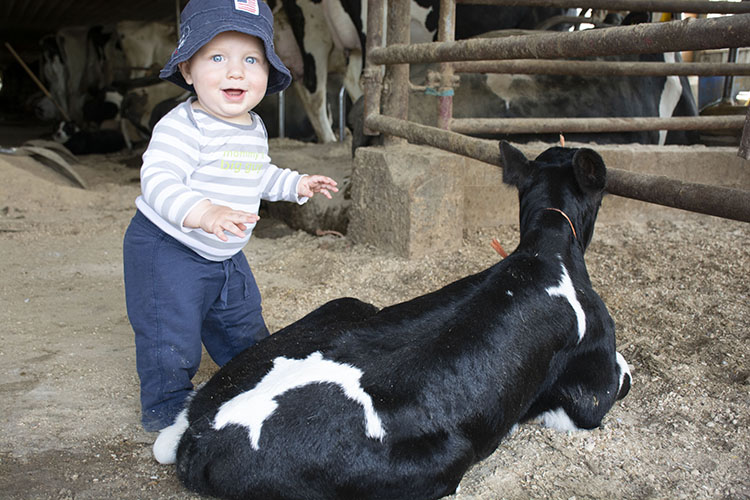
I have two young children, and keeping them occupied and safe can feel like a full-time job in some situations. This gives me a whole new appreciation and admiration for all the farm moms out there who, like my own mother, raised children while working on the farm.
During the Upper Midwest Agricultural Safety and Health Center (UMASH) Online Expo, a few of the presentations focused on farm kid safety. This topic has become even more relevant the past few months as school and daycare closures have kept more children at home with their parents while they work. Marsha Salzwedel, a project scientist and the Agricultural Youth Safety Specialist for the National Children’s Center for Rural and Agricultural Health and Safety (NCCRAHS), shared recommendations and resources for protecting children.
“Farmers are busy and wear a lot of hats,” Salzwedel said. “No matter how many hats farmers wear, the most important job they have if there are children on the farm is to safeguard those children. They are a parent first and a farmer second.”
Salzwedel shared five strategies that will save the most lives and prevent the most injuries for children living and working on farms:
- Keep kids away from tractors. She said 40% of accidental deaths in children under the age of 15 involve a tractor, yet four out of five farm kids regularly ride tractors.
- Keep young children out of the worksite completely.
- Ensure the work done by youth is age and ability appropriate.
- Address as many hazards in the environment as possible.
- Provide training for tasks and ensure youth are proficient in those tasks before they are turned loose to do those jobs themselves.
For older youth, assigning age appropriate work is key. Salzwedel said to assess each youth worker individually to see if they have the ability to complete the job. Assessments and guidelines for various ages can be found at https://cultivatesafety.org/work.
For younger children, safe play areas are highly advocated. If childcare is not an option, create a safe play area on the farm. Ideas can be found at https://cultivatesafety.org/play.
Salzwedel noted that agritourism is gaining in popularity, and she urged farmers to safeguard those visitors, too. Forty percent of children’s farm-related injuries happen to youth who are visiting a farm. Resources in this area can be found at www.safeagritourism.org.
There are tremendous benefits for children who live and work on farms, but we can’t ignore the statistics. Every day, 33 children are seriously injured in agriculture related incidents across the country, and 60% of injuries happen to children who are not working but are just present on the farm.
Even more concerning, a child dies in an agriculture-related accident every three days in the US., and more youth die in agriculture than in all other industries combined. “Often, these youth are doing jobs that are not matched to their mental abilities,” Salzwedel said.
She shared some examples of changing norms when it comes to farm safety, like more people using bike helmets and car seats. Still, there is plenty of work to be done.
“Please become an advocate for children and youth,” Salzwedel said, either on the farm, out in the community, or on social media. “The primary job for all of us is to safeguard those youth and help us bury those unsafe traditions.”
Once again, many resources for farm safety can be found at https://cultivatesafety.org.

The author is the senior associate editor and covers animal health, dairy housing and equipment, and nutrient management. She grew up on a dairy farm near Plymouth, Wis., and previously served as a University of Wisconsin agricultural extension agent. She received a master’s degree from North Carolina State University and a bachelor’s from University of Wisconsin-Madison.








